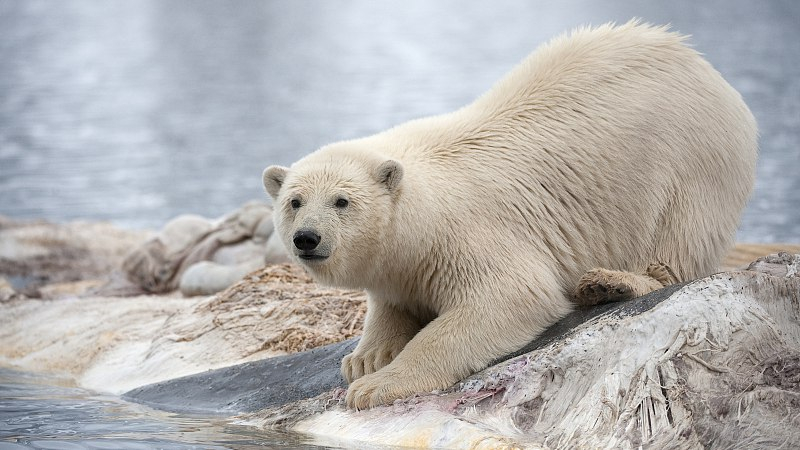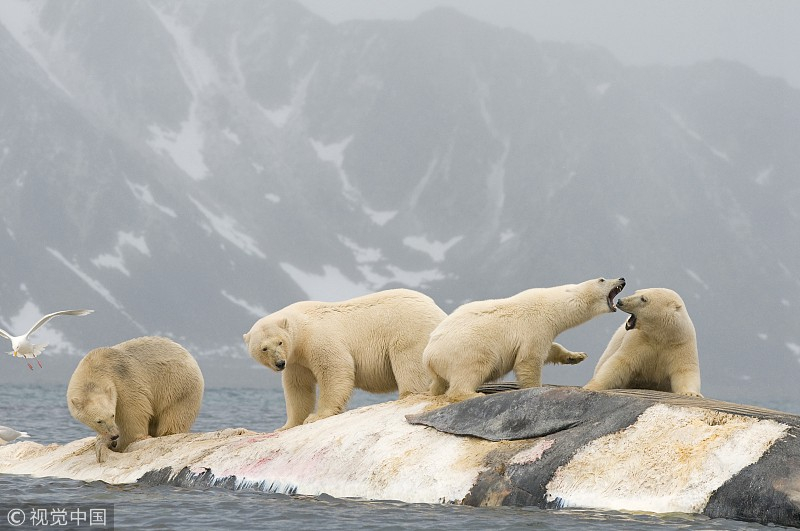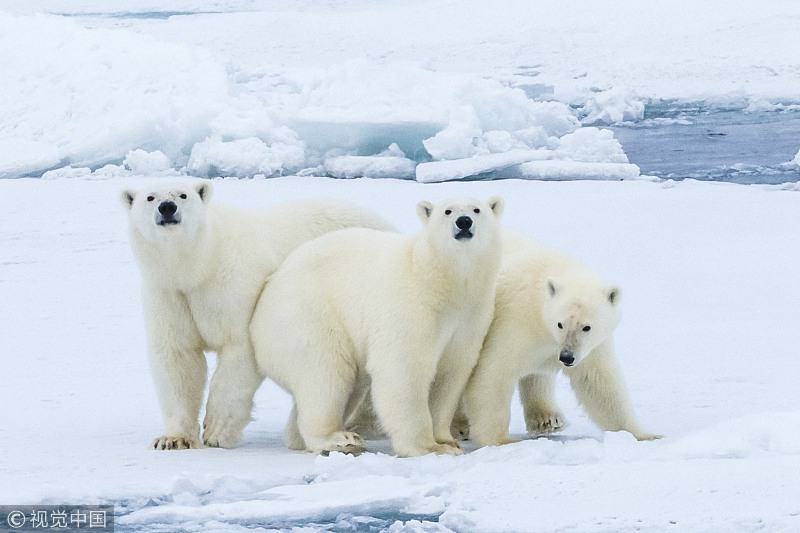
Enviro
09:12, 10-Oct-2018
Whale-eating polar bears have dwindling food source: study
Updated
08:48, 13-Oct-2018
CGTN

Polar bears can survive the warm periods in the Arctic by gorging the carcasses of stranded large whales but this food source may not be enough to sustain most bear populations in the future.
A study published on Tuesday in the journal Frontiers in Ecology and the Environment showed that, although dead whales are still valuable sources of fat and protein for some polar bears, they're not enough when the Arctic becomes ice-free in summers which is likely to occur by 2040 due to climate change.
"If the rate of sea ice loss and warming continues unmitigated, what is going to happen to polar bear habitat will exceed anything documented over the last million years," said the paper's lead author Kristin Laidre, a marine biologist at the University of Washington's Polar Science Center.
"The extremely rapid pace of this change makes it almost impossible for us to use history to predict the future," said Laidre.
Polar bears need sea ice to survive because it is an essential platform for hunting seals, their main food source. They travel over the ice, searching for breathing holes or seal birth dens.
However, when the ice breaks up in late spring, polar bears in some populations will fast on land, waiting for the ice to re-form so they can resume hunting.
In some cases, between 40 and 60 different polar bears have been observed feeding on large bowhead and gray whale carcasses and, in 2017, more than 180 bears were seen scavenging on a single dead bowhead whale.

In 2017, more than 180 bears were seen scavenging on a single dead bowhead whale. /VCG Photo
In 2017, more than 180 bears were seen scavenging on a single dead bowhead whale. /VCG Photo
"The potential of whale carcasses to bail bears out may still be important in a few areas but, quite simply, their overall availability is going to be substantially less than before humans invaded the Arctic," said the paper's co-author Ian Stirling, an adjunct professor at the University of Alberta.
The researchers calculated how much blubber and meat an average population of 1,000 polar bears would need as a food source each year. Then, they looked at the abundance of gray and bowhead whale populations on the coasts of Chukotka and Alaska.
They estimated the number of potential strandings, factoring in that about 10 percent of whales that die will float to the surface, and only some of those end up on land that is accessible to bears.
Their analysis found that during ice-free summer months, a hypothetical population of 1,000 polar bears would need to eat about eight whales, and during the springtime feast when bears eat more, about 20 whales would be needed to satisfy the same 1,000 bears.
In the Chukchi Sea, long-term data collected in Russia have indicated that enough whales die and float to shore each year to potentially meet this need, the authors found.
But feeding on dead whales, while possibly critical in historical times, seems unlikely to help most polar bear populations survive a rapidly warming Arctic.
The Arctic is home to 19 subpopulations of polar bears, but not every region sees large whales strand and die as regularly as the Chukchi Sea.

The Arctic is home to 19 subpopulations of polar bears. /VCG Photo
The Arctic is home to 19 subpopulations of polar bears. /VCG Photo
Also, though whale carcasses likely helped polar bears survive in past low-ice periods, the Arctic landscape has changed drastically since then. Now, whale populations are much smaller due to past human exploitation.
"In most regions, the environmental changes are too large and the whale carcasses are too few," said Laidre.
(Top image: A polar bear feeds on a baleen whale carcass. /VCG Photo)
Source(s): Xinhua News Agency

SITEMAP
Copyright © 2018 CGTN. Beijing ICP prepared NO.16065310-3
Copyright © 2018 CGTN. Beijing ICP prepared NO.16065310-3